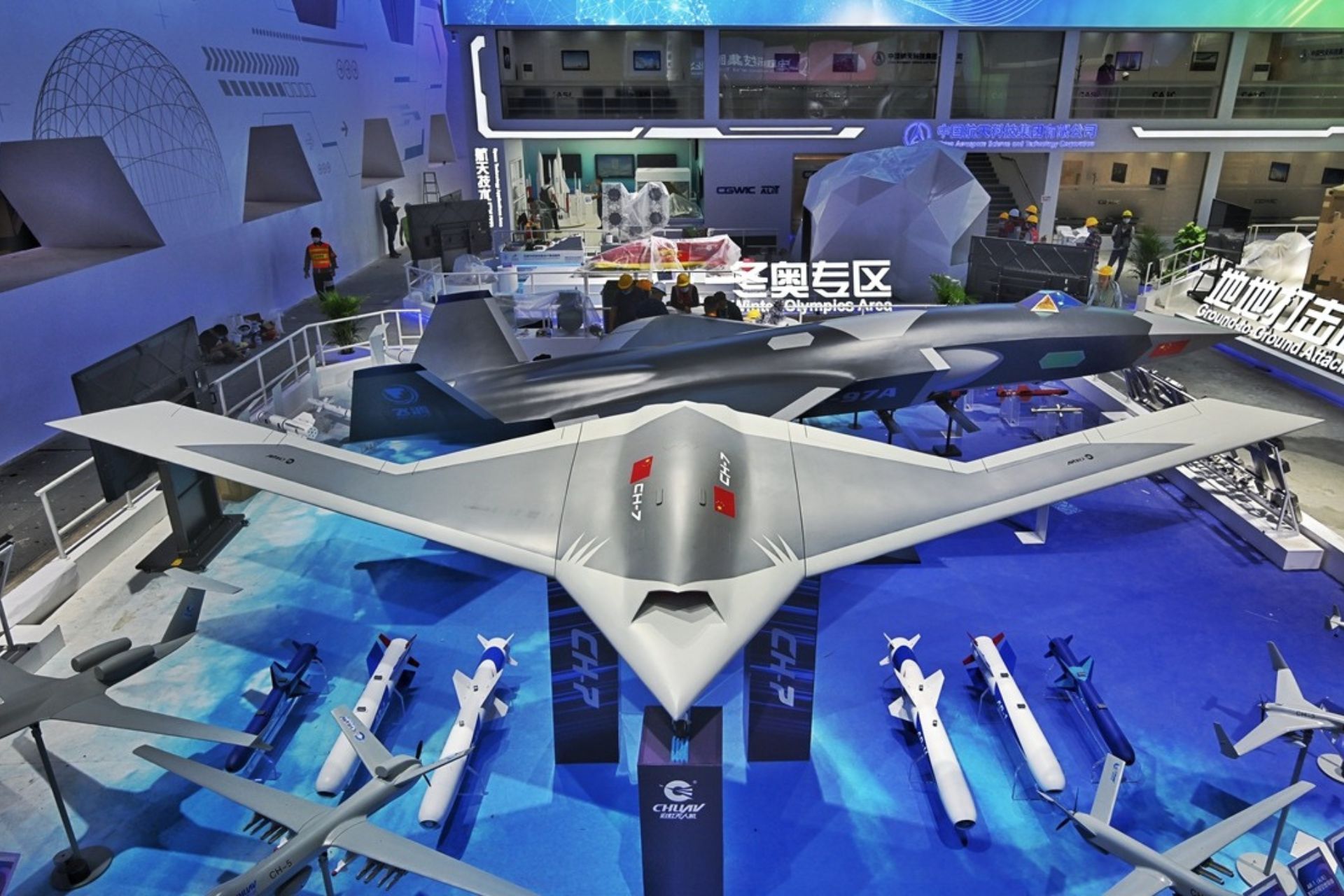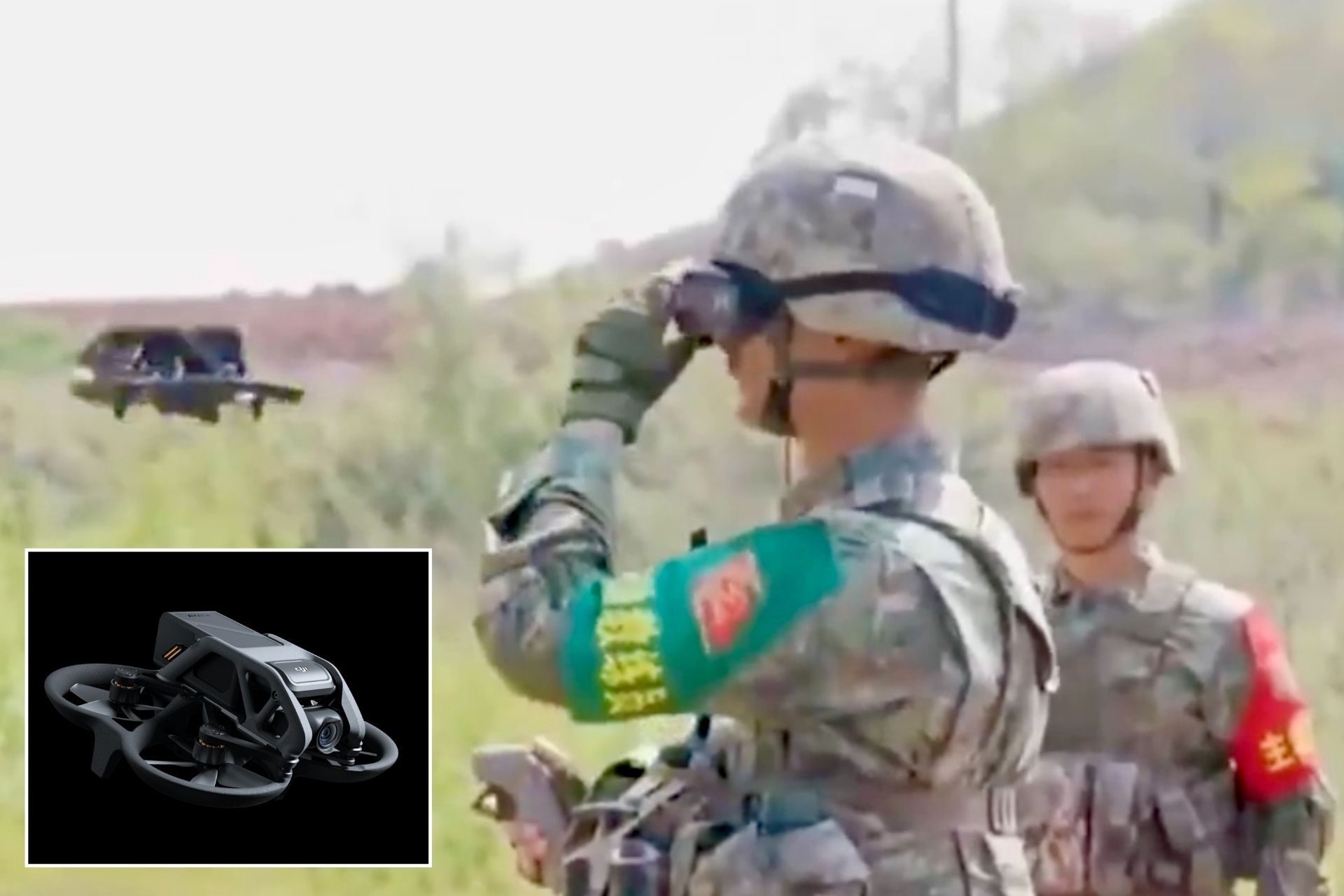Breaking News
Focus: China's Strategic Preparations for Next-Generation Drone Warfare.
For years, China has established itself as a key player in the development of military technologies, particularly in the drone sector. While many nations have also invested in this technology, China stands out due to the diversity and sophistication of its models, ranging from MALE (Medium Altitude Long Endurance) drones to ultra-small biomimetic drones. These innovations suggest that China is anticipating a new era of conflicts, where mini-drones will play a central role, both in reconnaissance missions and precision strikes.
Follow Army Recognition on Google News at this link

The CH-7, also developed by CASC, represents the next generation of Chinese combat drones (Picture source: CH UAV)
Chinese MALE Drones: Strategic Pillars of Chinese Military Operations
Drones are essential in modern military operations, particularly in ISR (Intelligence, Surveillance, Reconnaissance) missions and precision strikes. The Chinese CH-4 and Wing Loong drones are two prominent military models known for their surveillance and precision strike capabilities. The CH-4, produced by the China Aerospace Science and Technology Corporation (CASC), entered service in 2014. It is particularly valued for its versatility in ISR missions and its ability to carry out precision strikes with a range of air-to-ground munitions. The Wing Loong, developed by the Aviation Industry Corporation of China (AVIC), was first produced in 2009 and entered service in 2011. It is comparable to the CH-4 in terms of role and capabilities, offering advanced avionics systems, long endurance, and various armament options.
Both drones are in service with the Chinese military and have been exported to several countries, including Pakistan, Egypt, and Saudi Arabia. The CH-4 has been highly successful in the export market due to its cost-effectiveness and performance, with hundreds of units produced. The Wing Loong, with its variants such as the Wing Loong I and II, has also seen significant production and international adoption.
These drones can fly at altitudes ranging from 5,000 to 7,500 meters, with endurance ranging from 14 to 20 hours, and can carry payloads for reconnaissance and strike missions. Their ISR and strike capabilities make them strategic assets in modern military operations.The CH-7, also developed by CASC, represents the next generation of Chinese combat drones. This stealth drone was first unveiled at the Airshow China in 2018 and is currently in advanced development, with entry into service expected in 2024.
The CH-7 stands out for its flying wing design, optimized for stealth, allowing it to reduce its radar signature and penetrate heavily defended areas. With a wingspan of 26 meters and a service altitude reaching 15 kilometers, it is designed for prolonged reconnaissance and surveillance missions, as well as precision strikes. This drone can also be armed with missiles and guide other weapons to strike high-value enemy targets.
These drones have been used in various missions, ranging from maritime surveillance in the South China Sea to counterterrorism operations within international alliances. Models like the CH-4 have become strategic assets for China, allowing them to project military power far beyond their borders, especially to monitor maritime areas where disputes with neighboring countries arise over exploitation rights.

FVP drones, equipped with onboard cameras and piloted using VR goggles for full immersion, allow operators to perform complex maneuvers and precision strikes, including kamikaze attacks(Picture source: Chinese Military/DJI)
China Adapts Its Drone Arsenal by Developing FPV and Swarm Drones Inspired by Current Conflicts
In parallel with the development of MALE drones, China is heavily investing in FPV (First-Person View) drones and swarm drones. These technologies are particularly suited for rapid strike missions and saturating enemy defenses.
China is intensifying its efforts in developing and integrating FPV drones into its armed forces, particularly for internal security and military operations. FPV drones, especially those used by the People's Armed Police (PAP) in Yunnan province, are at the heart of new training programs. These drones, equipped with onboard cameras and piloted using VR goggles for full immersion, allow operators to perform complex maneuvers and precision strikes, including kamikaze attacks. This technology is especially valuable in counter-insurgency scenarios and urban operations, where discretion and speed are critical.
Among the FPV drone models developed, China uses platforms like the DJI Avata for initial training, while adapting these civilian technologies for more advanced military uses. These drones are often inspired by recent conflicts, such as the war in Ukraine, where FPV drones have proven to be effective and economical weapons. Chinese efforts are also focused on developing swarm drones capable of overwhelming enemy defense systems through coordinated attacks. This type of drone could play a crucial role in future asymmetric conflicts, where technology and precision strikes will be decisive for victory.
Chinese scientists have recently developed a new type of drone capable of splitting into multiple units in mid-flight, creating a tactical shock against the adversary. This drone, which resembles a consumer-grade DJI multirotor, can split into two, three, or six small drones, each with specific functions such as reconnaissance, command, or attack. This development, led by Professor Shi Zhiwei of Nanjing University of Aeronautics and Astronautics, marks a significant advancement in air separation technology.

. At the Zhuhai Airshow in 2022, China showcased a vehicle-mounted swarm launcher capable of launching up to 18 drones simultaneously (Picture source: Zhejiang University)
The main challenge of this technology was the loss of flight efficiency during the combination of drones. However, Shi's team overcame this problem, increasing flight efficiency by nearly 40% compared to traditional drones. This progress could offer a significant tactical advantage to the People's Liberation Army (PLA), allowing these drones to evade enemy air defense systems by saturating radars and conducting coordinated attacks.
At the same time, China has also intensified its efforts in developing swarm drones. Controlled by advanced AI, swarm drones can coordinate their movements to create a surprise effect and overwhelm enemy defense systems.
These swarm drones are being developed for missions where speed and discretion are essential, such as infiltrating enemy bases or destroying strategic targets in record time. At the Zhuhai Airshow in 2022, China showcased a vehicle-mounted swarm launcher capable of launching up to 18 drones simultaneously. This technology, coupled with artificial intelligence, enables drones to carry out autonomous missions in coordination, creating a saturation of enemy defenses.
Biomimetic drones, inspired by nature, are designed to mimic the movements of birds, insects, or other animals, making them extremely difficult to detect (Picture source: Chinese military)
Chinese Biomimetic Drones: A Technological Innovation Adapted to Future Conflicts
Another area where China excels is biomimetic drones. These drones, inspired by nature, are designed to mimic the movements of birds, insects, or other animals, making them extremely difficult to detect. The Xinge drone is a notable example of this technology. Designed to resemble a bird, it can fly by flapping its wings like a real bird, allowing it to go unnoticed during reconnaissance missions in urban or rural environments.
Although initially intended for commercial use, the Xinge was quickly adapted for military missions. Its ability to blend into the environment makes it ideal for discreet surveillance missions, where any detection could compromise the operation. China is investing heavily in this type of drone, seeing them as the future of intelligence and surveillance missions. Their small size, ability to mimic natural movements, and stealth make them formidable tools for operations in enemy territory.
China's development of biomimetic drones is not limited to immediate military applications. Chinese research is also exploring the possibility of integrating regenerative capabilities, inspired by living organisms, into these drones. This approach could allow them to repair damage sustained in flight or extend their operational lifespan, representing a significant advance in drone warfare.
As the military competition between the United States and China intensifies, both nations are preparing for a new form of warfare using AI-equipped aerial and maritime drone swarms. These drones, coordinated in swarms, can conduct reconnaissance and attack missions autonomously. The United States is developing low-cost drones to counter a potential Chinese invasion of Taiwan, while China is rapidly advancing in swarm drone technology, combining its advanced hardware capabilities with software innovations. While international cooperation to limit the proliferation of these technologies is desired, persistent tensions between the two powers make this unlikely. Rapid advancements in this field could trigger a global arms race, especially as these technologies become accessible to less powerful nations and militant groups.
Meanwhile, the arsenal of drones developed by China shows a clear strategy: to prepare for next-generation conflicts where discretion, speed, and precision will be key. MALE, FPV, swarm, and biomimetic drones are all elements of a global system aimed at giving China a strategic advantage in future wars. As miniaturization and autonomy continue to progress, it is likely that these mini-drones will play an increasingly central role in future conflicts, redefining the very nature of modern warfare. The constant development of these technologies by China shows that drone warfare is just beginning, and the battle to dominate this field will be crucial for the coming decades.
These two complementary visions show China's determination to integrate advanced technologies, such as drone swarms and biomimetic drones, to reshape the outcome of future conflicts while engaging in a technological race with the United States that could redefine military strategies globally.


























